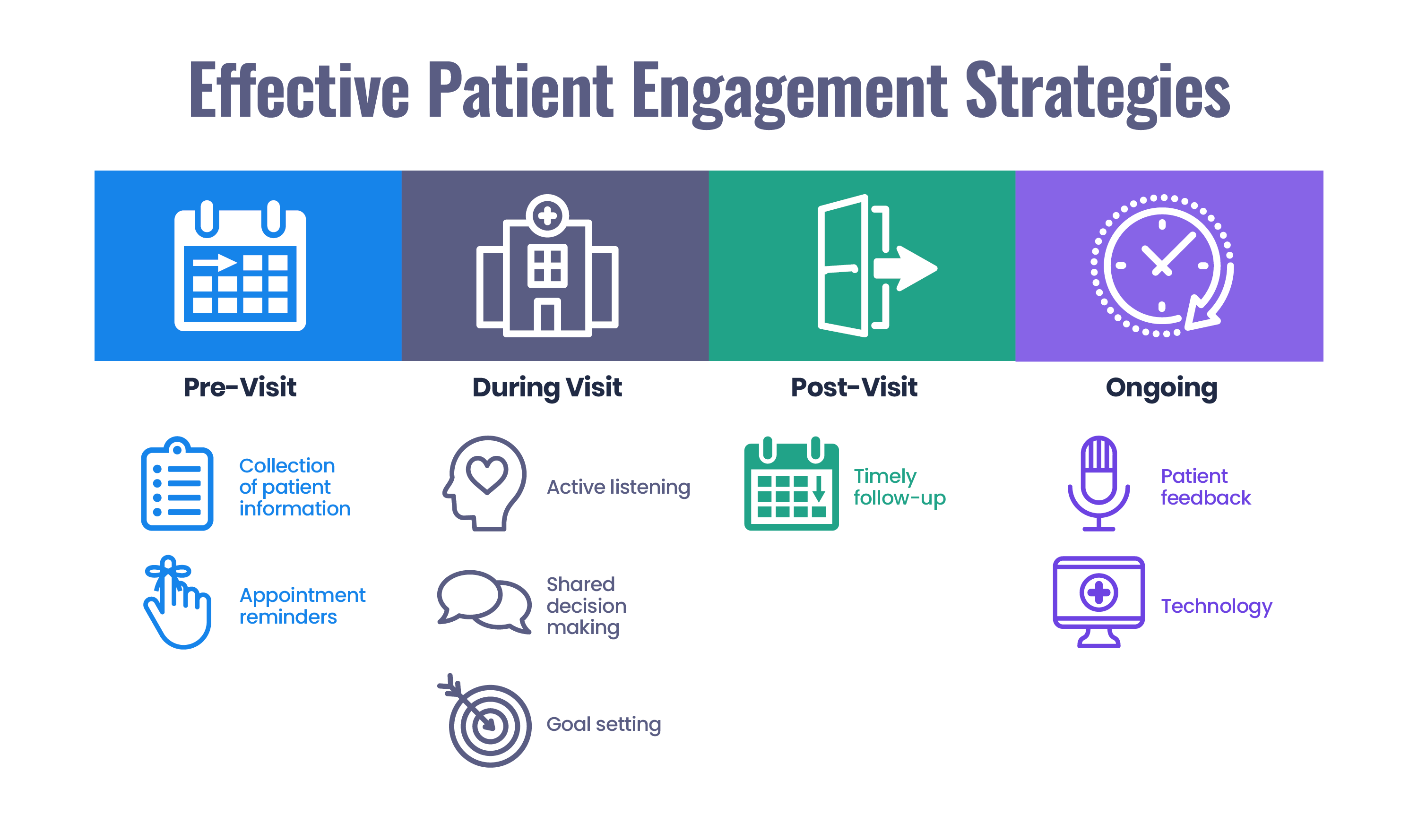3 min read
Patient Engagement Strategies: Creating a Safer Future in Healthcare
Performance Health Partners
August 21, 2023

Patient engagement goes beyond the traditional patient-provider relationship, shifting into a collaborative partnership focused on shared decision-making and active involvement in one’s healthcare journey. Read on to learn more about the profound impact of patient engagement. Find out how the active involvement of patients and their families can bolster safety in all care settings and how to implement effective patient engagement strategies.
What is Patient Engagement?
Patient engagement refers to the active participation and involvement of patients in their healthcare decisions, treatment plans, and overall well-being. It fosters a patient-centered approach where healthcare providers value and incorporate the patient’s preferences, needs, and perspectives into the care process. Patient engagement encourages patients to proactively manage their healthcare needs, empowering them to take charge of their care journey alongside healthcare professionals.
The Benefits of Patient Engagement
- Improved Health Outcomes: An engaged patient is more likely to take their medications as prescribed by their doctors, resulting in fewer complications, minimizing unnecessary visits, and emergency admissions, according to the “Journal of Patient Experience.”
- Enhanced Patient Satisfaction: Prioritizing patient engagement can improve patient experience and patient satisfaction through improved provider communication, personalized care plans, and proactive outreach and support.
- Reduction in Healthcare Costs: According to Business News Daily, research shows that patient engagement may reduce costs, with potential savings of over $290 billion in the United States. Additionally, patient engagement aligns closely with the principles of value-based care – a healthcare model that focuses on improving health outcomes while controlling costs.
Patient Engagement and Patient Safety: What's the Connection?
Active engagement of patients and their families is pivotal in elevating patient safety across diverse care settings and at every echelon of the healthcare spectrum. When patients are actively involved in their own care and decision-making processes, they become a vital part of a collaborative approach to safety.
Informed patients are better equipped to:
- Understand their diagnoses
- Adhere to their treatment plans
- Understand potential risks
- Actively participate in error prevention and early detection of issues
Engaging patients in discussions about medication management, adherence, and understanding potential side effects can reduce the likelihood of medication errors. Moreover, active patient engagement encourages open communication, enabling patients to voice concerns or ask questions about their care. This facilitates timely identification and resolution of potential safety concerns as well as near miss events.
This partnership between healthcare providers and engaged patients and their families creates a proactive safety net, leading to a more comprehensive and effective approach to patient safety that benefits both patients and the healthcare system.

Implementing Effective Patient Engagement Strategies
A patient engagement checklist provides a structured approach to ensuring that patient engagement practices are consistently and comprehensively applied across healthcare settings. While specific items on the checklist can differ based on the organization, a few exemplary patient engagement strategies are outlined below.
Pre-Visit
Collect Patient Information: Heidi Raines, Founder and CEO of Performance Health Partners, emphasizes in her book “Shared Voices: A Framework for Patient and Employee Safety in Healthcare” that, "Ensuring patient and family engagement helps clinicians obtain accurate information about details like each patient’s medications, allergies, and current health status.”
Appointment Reminders: Reminders are an essential patient employee strategy that empowers patients to take an active role in their healthcare. When patients are aware of upcoming appointments, they are more likely to engage in preparatory steps, ask questions, and communicate their concerns during the visit.
Missed appointments cost providers an estimated $150 billion annually in the U.S., according to Forbes.
During Visit
Active Listening: A cornerstone of patient engagement, active listening by providers cultivates open dialogue and trust. This leads to clearer exchanges of information and improved patient-provider relationships, motivating patients to ask questions and voice their concerns.
Shared Decision-Making: A key patient engagement strategy is involving patients in the decision-making process. When patients are part of this process, they take ownership of their health and become partners in their care. This sense of empowerment motivates them to engage more actively in managing their health.
Goal Setting: Goal setting transforms patients from passive care recipients to active participants in their health journey. Patients become more engaged, motivated, and invested in their treatment plans.
Post-Visit:
Timely Follow-Up: Timely follow-up illustrates that the healthcare provider values the patient's time and well-being. Satisfied patients are more likely to remain engaged, adhere to treatment plans, and positively perceive their overall care experience.
Ongoing Engagement:
Patient Feedback: Emphasizing patient engagement strategies like seeking feedback can show patients that their opinions are valued. This encourages them to stay involved and collaborate in their care planning.
Technology: Employing technologies such as incident reporting software enables healthcare settings to identify trends and pinpoint areas for improvement. This ability to discern patterns leads to ongoing enhancements in patient safety measures and care processes. As the quality of care steadily advances, patients gain increased confidence, motivating them to be more active participants in their care journey.
In her book, Heidi Raines notes, “Making incident reporting tools accessible to patients and their families closes the gap between patient safety and patient experience efforts.”
Patient engagement plays an indispensable role in shaping the future of healthcare safety. By adopting a collaborative approach that values the active involvement of both patients and their families, healthcare organizations can achieve enhanced safety, better health outcomes, and increased patient satisfaction.
By utilizing effective patient engagement strategies, from active listening during visits to leveraging the latest technology for continuous improvement, we move closer to a healthcare paradigm that is both safer and more patient-centric.
Ready to learn more?
Connect with our team to learn more about how our award-winning incident management software can help your healthcare organization improve patient engagement and safety.


